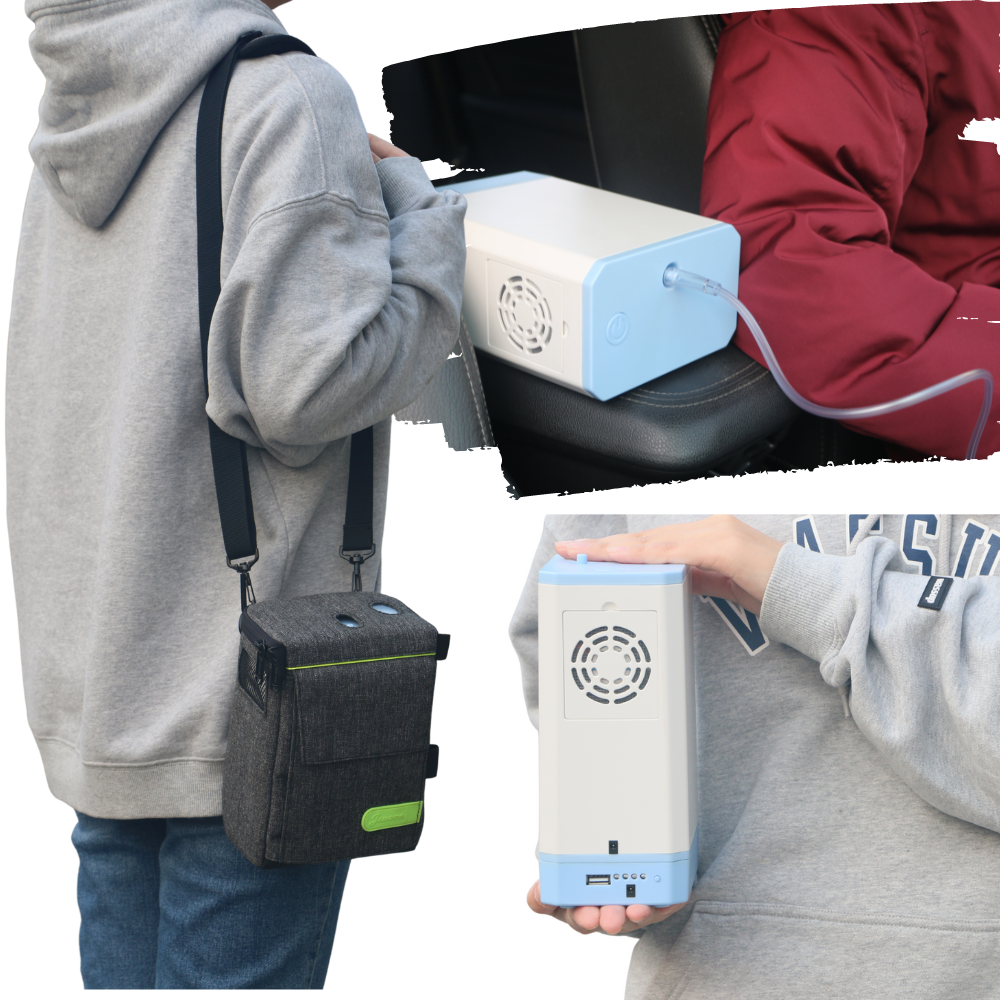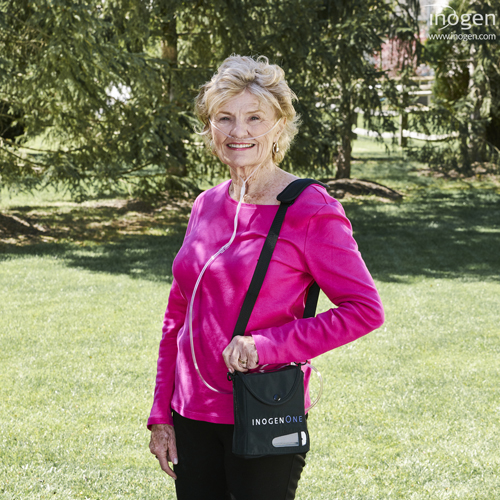The Basic Principles Of Portable Oxygen Concentrators
Wiki Article
A Biased View of Portable Oxygen Concentrators
Table of ContentsThe Best Guide To Portable Oxygen ConcentratorsThe Single Strategy To Use For Portable Oxygen ConcentratorsThe 5-Second Trick For Portable Oxygen ConcentratorsThe 5-Minute Rule for Portable Oxygen Concentrators
Fixed oxygen concentrators were once the requirement, yet these containers can weigh 50 extra pounds and were extremely difficult (Portable Oxygen Concentrators). Currently, mobile oxygen concentrators finish the job, and they can suit a purse or purse! The only thing you should bear in mind is that portable concentrators have extra limited oxygen delivery capabilitiesThere are 2 main kinds of mobile oxygen concentrators: pulse dosage and constant flow. As the name recommends, pulse dose concentrators provide oxygen periodically, just triggering when you inhale. This type of device is typically advised for COPD people with restricted oxygen demands, as the amount of O2 that a pulse dose concentrator can supply is reasonably reduced.
This gadget can provide up to 3,000 m, L of oxygen every minute, while pulse dose tools have a tendency to top out at 1250 m, L. Continuous circulation tools are the go-to for the majority of COPD individuals, as they're ideal for individuals that need two to five litres of oxygen a minute.
Now that you have this overview to the different types of portable oxygen machines, select the finest gadget with the help of your medical professional.
6 Simple Techniques For Portable Oxygen Concentrators
We asked yourself how well these portable oxygen concentrators would work in healthcare facilities. POC concentrators enhance the percentage of oxygen in ambient air individuals breathe in, whenever they require a boost.When it concerns portable oxygen therapy, there are two major choices for shipment. These are portable oxygen cyndrical tubes which have pressed oxygen gas, or oxygen concentrators, which utilize a battery powered system to compress and filter air, in order to develop a consistent supply of concentrated oxygen. In this blog post, AMS Compound Cylinders Technical Director, Tony Morrin, compares both, taking a look at the pros and cons of each oxygen distribution system for NHS clinical oxygen users in terms of patient autonomy.

Portable Oxygen Concentrator Oxygen purity is constantly greater when supplied from cylinders it never drops below 99. Whilst oxygen concentrators can be beneficial for clients that require a reduced circulation of oxygen, cyndrical tubes give greater focus that can be extra ideal for people with high circulation demands.
See This Report about Portable Oxygen Concentrators
Both systems require the client to lug about devices. For cylinders, this here will consist of bring a bag (and occasionally a trolley) and for mobile oxygen concentrators this will certainly include the bag, cart and power charger. Weight smart, mobile oxygen concentrators can be equivalent in weight, or often, lighter than conventional aluminium cyndrical tube systems.
They will certainly have to boost dramatically if they are to supply the exact same degree of performance as similar composite cylinders. Oxygen constantly brings a safety danger. On one hand, need to cylinders spring a leakage, they can create an oxygen abundant setting that could bring about an increase in fire threat.

The distinction is that there are considerable ahead of time expenses to buying a portable oxygen concentrator, yet reduced running costs utilizing cylinders makes it possible for the buyer to spread the cost over an extended amount of time. One minor drawback of a portable oxygen concentrator is the sound portable systems make a significant quantity of noise during operation, which many individuals discover disruptive.
The Definitive Guide for Portable Oxygen Concentrators

Our premium carbon composite cylinders use high stress (300 Bar), low weight, and NLL (Non-Limited Life) performance, and are recognized for usage worldwide. Additional info concerning AMS Compound Cylinders Ltd can be found at .
Oxygen concentrators are created with customer flexibility in mind. Whether it's a desktop computer version for home usage or a smaller, light-weight version for on-the-go, these tools permit patients to move openly without being connected to a stationary device. Especially website here for the ones specifically designed for portability, people can bring them around, helping with travel and everyday tasks effortlessly.
Among the significant benefits of making use of an oxygen concentrator is the removal of the regular need to re-fill oxygen storage tanks. This not only reduces the logistical obstacles and reoccurring costs related to refills however also makes certain that the individual has a much more predictable and constant source of oxygen. Oxygen concentrators are created to fit effortlessly helpful site into the home setting.
Report this wiki page